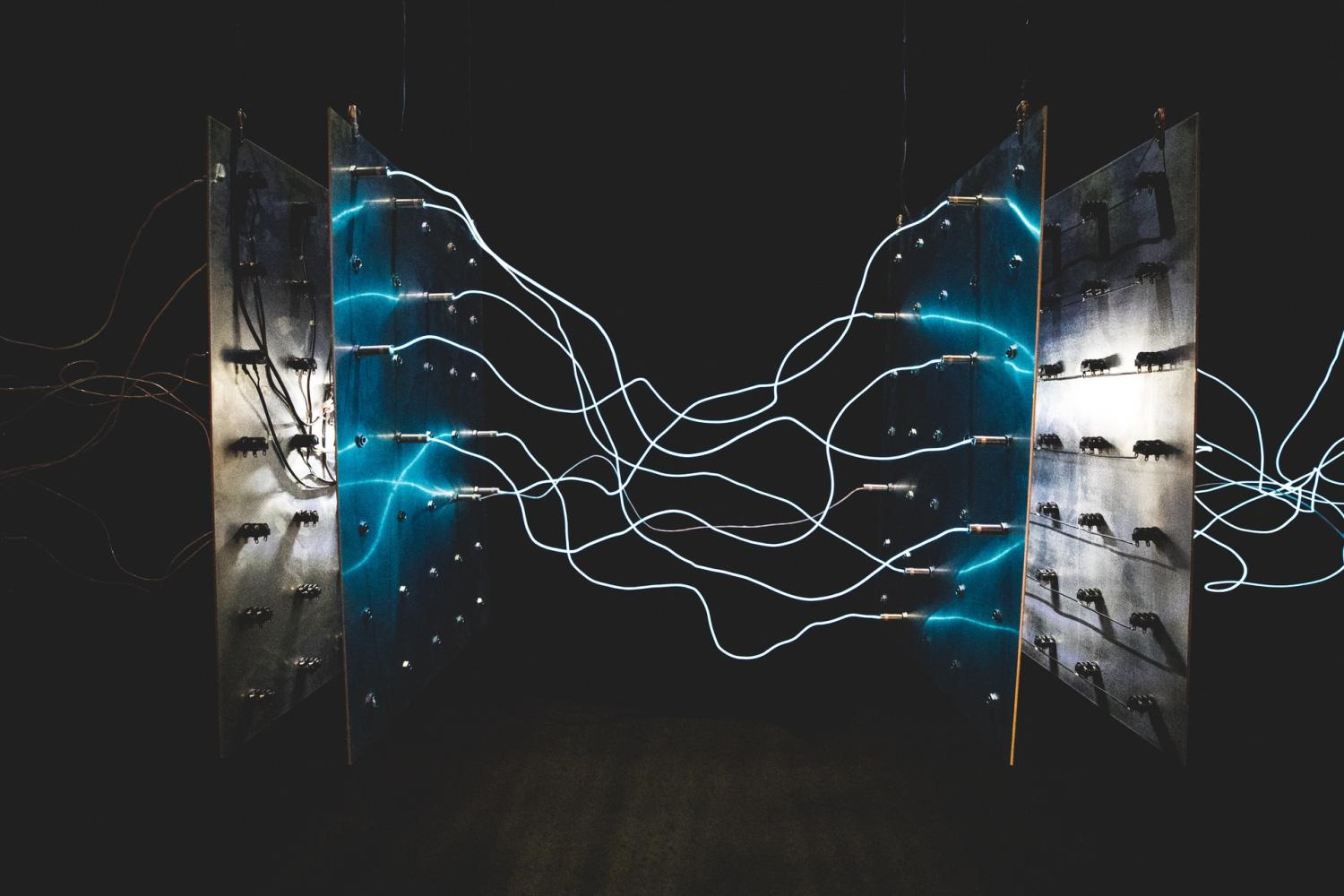
Airplanes, livestock, monster trucks — we know these carry a significant carbon footprint. Digital activities, on the other hand, sometimes go under the radar. Consider, for example, the carbon contribution of searching the web. All the data held by websites is stored on servers, and that takes energy. Data centers, rooms filled to the ceiling — sometimes the size of many football fields — with row upon row of servers, account for about one percent of global electricity use, according to the International Energy Agency's (IEA) 2021 tracking report.
Energy use by data centers has remained steady since at least 2010, according to the IEA's report, even though internet traffic has taken an exponential climb. The organization attributes the consistency partly to the continual improvements in energy efficiency that data center technologies have experienced. But the IEA also warns that global internet traffic continues to grow. Between 2017 and 2020, traffic more than doubled, and it could double again by 2023, the report states. At a certain point, it makes sense to temper the web’s demand for energy. So, what’s needed in the quest for a more sustainable web?
The sustainable web is just starting out…
The field of sustainable web design is still nascent, but there have been groups creating energy-efficient sites and processes. Recently, a new coalition of American and European businesses and non-governmental organizations has come together with a focus on the internet’s environmental impact. The group includes organizations such as The Green Web Foundation, which has a vision for a fossil-free internet by 2030, and businesses like EcoPing, which boasts an array of tools to diminish website carbon emissions.
The collaboration has resulted in a platform, SustainableWebDesign.org, where the creators of web technology can find methods, recommendations and tools to help them create sustainable products and services. The basis of all the coalition offers is the Sustainable Web Manifesto, which comprises six principles that touch on environment impact, but also extend to social impact — as in truly embracing the triple bottom line. These principles include the use of clean energy, efficiency in resource use, as well as accessibility to all users and non-exploitative design.
…and it needs your help
As far as why an organization or company would align itself with the Sustainable Web Manifesto, the contributors put forth a convincing argument about the urgency of climate change. They write: “The planet is experiencing unprecedented climate change and the Internet is both part of the problem and the solution. From websites to cryptocurrencies, the Internet consumes large amounts of electricity in data centers, telecoms networks, and end user devices. If the Internet was a country, it would be the 7th largest polluter in the world and is expected to grow considerably by 2030.”
Climate impacts are a very practical consideration, as Tim Frick, president and founder of Mightybytes — one of the lead organizations of the new coalition — told TriplePundit in an email interview: “…the climate crisis is here now. It is the existential crisis of our time. It impacts every business, nonprofit, government agency, and, most importantly, every individual in the world, especially our most vulnerable communities.”
Frick adds that limiting greenhouse gas emissions to the extent needed to achieve the Paris Agreement goals is a challenge. “While that may seem daunting, progress starts with everyone taking one small step. This is ours,” he said.
Some small steps to take on the road to a cleaner web
Where can someone like a web developer start? Well, according to Frick, who has been working toward this progressive vision for the web since 2011, those involved in creating websites should consider it a learning journey. The coalition’s online hub lists strategies for every step of the web development process, from design and development to “client and project ethos.” Along the way, those serious about decarbonizing websites will learn how to estimate carbon emissions, make needed adjustments for efficiency and performance, use green web hosts and stay up-to-date via newsletters and other publications. The resources are all compiled on the new website — ready to be used.
One of the coalition’s biggest projects has been developing a method for calculating digital emissions and incorporating it into existing tools. Standardization has been key. “Our collective goal is to create resources that provide consistent emissions estimates,” Tom Greenwood, managing director of Wholegrain Digital, a London-based Certified B Corp, said in a press statement. “When you get different results from digital carbon calculation tools essentially meant to do the same thing, it sends a confusing message. This could result in people underestimating emissions, or worse, doing nothing at all."
The group has recently met with the standards-creating World Wide Web Consortium to create guidelines similar to those established for the Web Accessibility Initiative, which has found successful buy-in. Last year, for example, Colorado passed a law requiring websites from state and local public entities to meet accessibility standards. As it builds digital sustainability standards, the coalition is actively looking for additional collaborators. Interested parties can reach out on the contact form of the Sustainable Web Design site.
Image credit: Israel Palacio via Unsplash

Roya Sabri is a writer and graphic designer based in Illinois. She writes about the circular economy, advancements in CSR, the environment and equity. As a freelancer, she has worked on communications for nonprofits and multinational organizations. Find her on LinkedIn.














